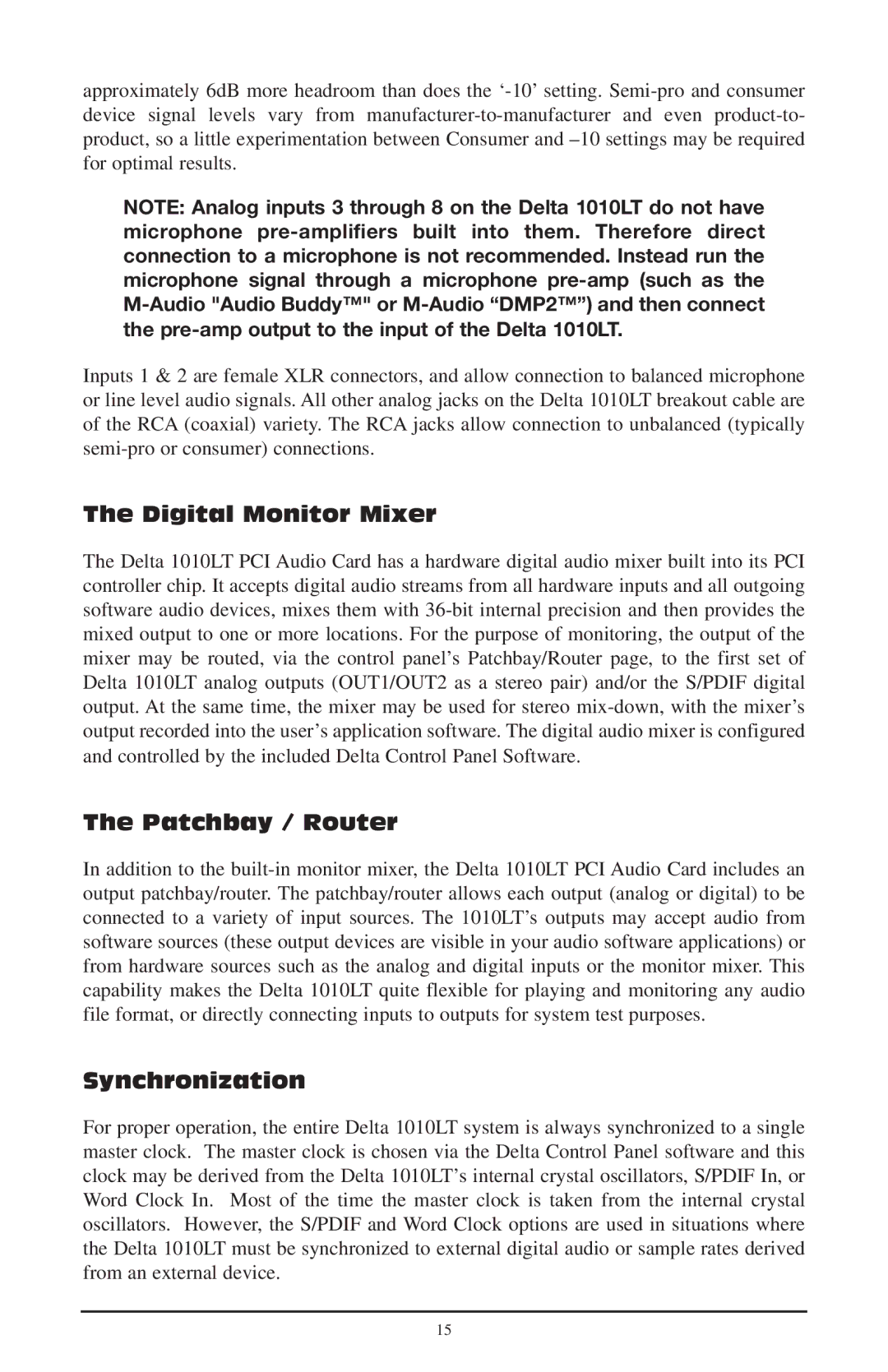approximately 6dB more headroom than does the ‘-10’ setting. Semi-pro and consumer device signal levels vary from manufacturer-to-manufacturer and even product-to- product, so a little experimentation between Consumer and –10 settings may be required for optimal results.
NOTE: Analog inputs 3 through 8 on the Delta 1010LT do not have microphone pre-amplifiers built into them. Therefore direct connection to a microphone is not recommended. Instead run the microphone signal through a microphone pre-amp (such as the M-Audio "Audio Buddy™" or M-Audio “DMP2™”) and then connect the pre-amp output to the input of the Delta 1010LT.
Inputs 1 & 2 are female XLR connectors, and allow connection to balanced microphone or line level audio signals. All other analog jacks on the Delta 1010LT breakout cable are of the RCA (coaxial) variety. The RCA jacks allow connection to unbalanced (typically semi-pro or consumer) connections.
The Digital Monitor Mixer
The Delta 1010LT PCI Audio Card has a hardware digital audio mixer built into its PCI controller chip. It accepts digital audio streams from all hardware inputs and all outgoing software audio devices, mixes them with 36-bit internal precision and then provides the mixed output to one or more locations. For the purpose of monitoring, the output of the mixer may be routed, via the control panel’s Patchbay/Router page, to the first set of Delta 1010LT analog outputs (OUT1/OUT2 as a stereo pair) and/or the S/PDIF digital output. At the same time, the mixer may be used for stereo mix-down, with the mixer’s output recorded into the user’s application software. The digital audio mixer is configured and controlled by the included Delta Control Panel Software.
The Patchbay / Router
In addition to the built-in monitor mixer, the Delta 1010LT PCI Audio Card includes an output patchbay/router. The patchbay/router allows each output (analog or digital) to be connected to a variety of input sources. The 1010LT’s outputs may accept audio from software sources (these output devices are visible in your audio software applications) or from hardware sources such as the analog and digital inputs or the monitor mixer. This capability makes the Delta 1010LT quite flexible for playing and monitoring any audio file format, or directly connecting inputs to outputs for system test purposes.
Synchronization
For proper operation, the entire Delta 1010LT system is always synchronized to a single master clock. The master clock is chosen via the Delta Control Panel software and this clock may be derived from the Delta 1010LT’s internal crystal oscillators, S/PDIF In, or Word Clock In. Most of the time the master clock is taken from the internal crystal oscillators. However, the S/PDIF and Word Clock options are used in situations where the Delta 1010LT must be synchronized to external digital audio or sample rates derived from an external device.
